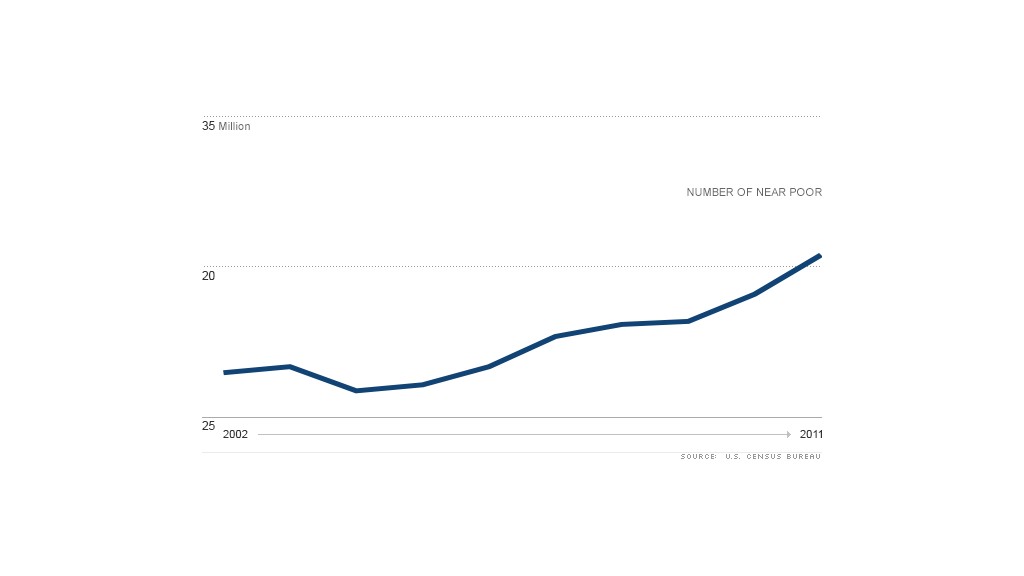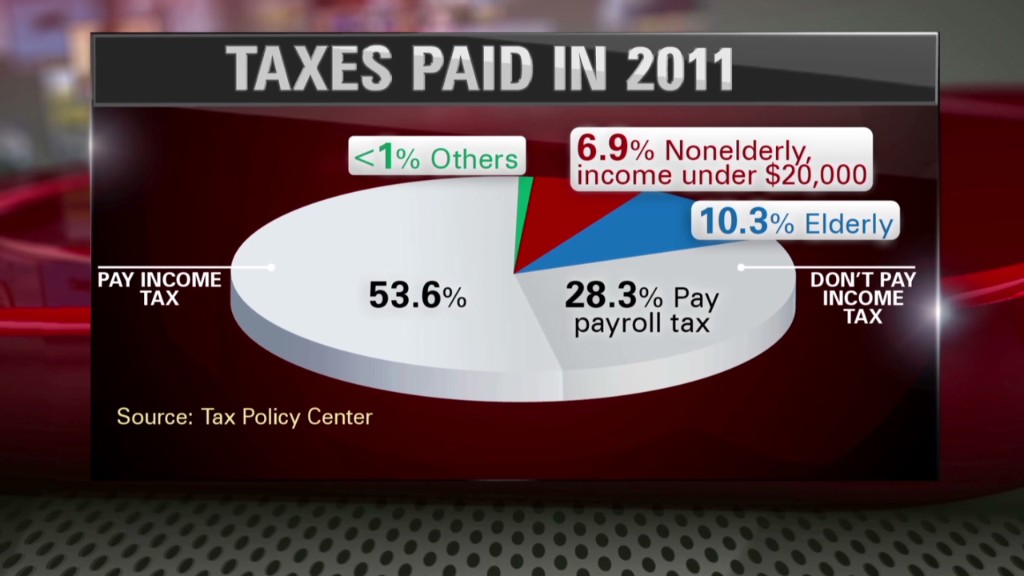
They aren't in poverty, but they are just a step away from falling into its clutches.
More than 30 million Americans are living just above the poverty line. These near poor, often defined as having incomes of up to 1.5 times the poverty threshold, were supporting a family of four on no more than $34,500 last year.
They are more likely to be white than those in poverty, according to a CNNMoney analysis of Census Bureau data. They are more likely to be elderly. They are more than three times as likely to work full-time, year-round. And they are more likely not to receive help from the government.
"People just above the poverty line are just one paycheck or health disaster away from poverty," said Katherine Newman, a dean at Johns Hopkins University. "They are still quite fragile."
The near poor have grown by about 10% in number over the past five years, as the Great Recession sent many people falling down the income ladder. The ranks of those in poverty, on the other hand, swelled 24% in the same period.
Half of the near poor are white, compared to just over two in five of those in poverty, according to Census figures. And only 16.7% are black, compared to 23.6% of those in poverty. The share of Latinos who are near poor is 27.8%, only slightly smaller than the share in poverty.
The fact that there are more blacks in poverty than among the near poor likely stems from the fact that the unemployment rate among blacks is nearly double that of whites, said Robert Moffitt, professor of economics at Johns Hopkins. And they have much higher rates of single motherhood, he said. Whites, on the other hand, likely have enough earnings to put them just above the poverty line.
Related: More than 20 million saved from poverty
Another large group among the ranks of the near-poor are senior citizens. Nearly 17% of the near poor are elderly, while only 7.8% of those in poverty are.
Social Security keeps many of the elderly, particularly white seniors, above the poverty line ... but barely, said Arloc Sherman, senior researcher at the Center on Budget and Policy Priorities.
"Social Security is not an exorbitant program," he said. "People end up above the poverty line, but not necessarily far above it."
So it's not surprising that nearly 40% of the near poor who didn't work are retired, but only 6% say they couldn't find a job. On the flip side, 46% are employed and nearly half are working full-time.
Some of the near poor are eligible for income-based government assistance since certain programs allow those just above the poverty line to enroll. The food stamps program, for instance, is open to those who earn 130% of the poverty line, while Medicaid and child care subsidies let some of the near poor enroll, depending on the state.

But many are left on their own. Only 57% of the near poor receive public aid, excluding school lunches, compared with 70.3% of those in poverty. They are more likely to rely on churches or social service agencies for help.
"There are still a very large number of working families who are struggling and all but poor," Sherman said.
Newman calls this group "the missing class" because they can be overlooked by policymakers and advocates. They include home health aids, child care workers, teachers assistants and hospital orderlies, to name a few. They work full time, but often don't have employer benefits, which adds to their vulnerability, said Newman, whose research looks at those up to two times the poverty level.
"They are still low-income, but we tend to ignore them," Moffitt said.



